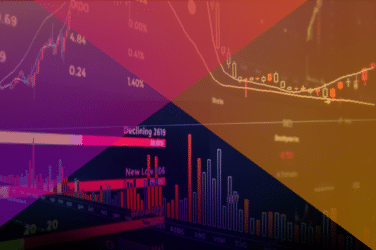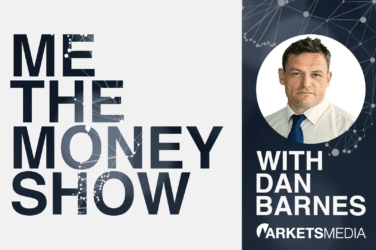SEC Rule 606: Repair Is Needed Before Any More Pilot Programs Are Started (by David Weisberger, Markit)
06.02.2016Since the SEC’s Rule 606 fails to require disclosure of the vast majority of routed orders, and there are no publicly available statistics on the efficiency or behavior of most routers, it would be imprudent to conduct a pilot on “maker taker” without first ensuring that all relevant data will be available.
The SEC’s Equity Market Structure Advisory Committee (EMSAC) is proposing a pilot to determine the potential benefits of limiting access fees in response to criticism that there are conflicts of interest in routing behavior. Unfortunately, the pilot can’t be evaluated fairly since there are no public statistics or disclosures on current routing behavior by some of the largest routers. While the SEC has hinted about a new “institutional” Rule 606 proposal, there have been comments that it will continue to exclude exchange routers or routing done by market centers that trade as principal.
The biggest shortcoming in the existing Rule 606 is the absence of reporting on modern smart order routers (SORs) which are ubiquitous. SORs are used by exchanges, brokers and are provided by vendors of order management systems. Today’s market structure is characterized by a high level of integration of exchanges, alternative trading systems, market makers and other liquidity providers, but it is not well understood by the investing public. To emphasize this point, based on publicly available Rule 605 data[1], in March of 2016 exchanges routed over 1.5 billion shares without disclosing to the public which venues they routed orders to or the number of orders or shares routed. The actual total volume of shares routed is likely at least 3 billion, since Rule 605 excludes all orders over 9,999 shares, short sales, odd lots and more. According to our estimates of share volumes, Rule 605 (the market center best execution reporting rule) covers less than half of all order flow. No exchange routing is included in Rule 606 reports, nor would it be under an “institutional Rule 606” proposal modelled after the ICI / SIFMA template[2].
In order to better understand why this is important, here’s some history on how this market structure based on SORs developed.
I first heard about SORs when I met with the founders of Lava Trading in 1999 in the café of what was One World Trade in New York. Their idea was to build technology for Nasdaq traders to take advantage of the growing volume in electronic communication networks (ECNs). At the time, the Nasdaq traders at my firm traded institutional orders using a combination of the Nasdaq SuperMontage system and the Instinet terminal, while more nimble traders also used ECNs. All ECNs, including Island (the largest), Brut, Arca, Redi and others, had electronic trading books with available liquidity.
By late 2000, Lava had built an integrated market data feed that combined the books of these ECNs with Nasdaq market data, using it to guide a software component called a smart order router. That software allowed traders to access all of the ECNs as well as Nasdaq, effectively linking all the markets and helping to achieve best execution.
During the following year, SEC Rule 11Ac1-6 (now Rule 606) became effective, but the type of smart order routing that Lava was developing wasn’t considered by the rule. At that time, orders were usually sent to individual exchanges or market makers and it was rare that orders were re-routed by either because the rule only required identifying the firm to which the order was routed first. For a while that was sufficient, since most brokers were either using DOT or sending orders to the NYSE handheld for listed orders and either Instinet or Nasdaq systems to trade on behalf of customers. Exchanges only routed orders to other exchanges via a slow, antiquated system called ITS, which was designed for manual entry to and from regional exchanges.
Since that time and particularly after Regulation NMS was implemented in 2007, SOR volumes and complexity increased significantly. In addition to routing to other exchanges, most SORs also connected to external liquidity providers (ELPs), which are market makers and trading firms that provided liquidity. The first wave of this activity was the infamous “flash” order, which gained attention when it was introduced by Direct Edge ECN. That program essentially broadcast unfilled customer orders to a private network of liquidity providers receiving the venue’s proprietary data feed. The ECN waited for a short time for one or more of those liquidity providers to send an order into their system, where it would match against the original order. If no match resulted from the broadcast, the system would continue by routing to other venues to be filled. After years of debate and considerable opposition, “flash” was discontinued.
Despite the negative reaction to flash orders, the more general concept of ELPs has flourished. Most exchanges access both ATS and non-ATS dark pools in their routing programs and most broker dealers operate systems that do the same. These liquidity pools are typically accessed by Immediate or Cancel (IOC) orders sent in rapid succession from a variety of SORs. That practice is called “blind pinging.” In addition, most exchange and commercial SORs consume private data from their ELPs called Indications of Interest (IOIs), which they use to make routing decisions. These messages essentially tell the router that if they were to receive an order, then the ELP is likely to fill it. As a result, the best execution committees at exchanges and brokers monitor these fill rates and use that reporting to adjust their routing behavior.
Why does all of this effort and complexity take place? In brief: it is highly profitable. The average exchange charges its broker dealer clients nearly $0.30 per 100 shares routed, since that is what the majority of the other exchanges charge as an access fee. The ELPs, however, charge much less and many do it for free. While exact numbers are only known by the exchanges themselves, we can estimate the value of this activity based on simple assumptions. Assuming our conservative estimate of exchanges routing 3 billion shares per month is accurate, and if half of that routing was handled by ELPs, the exchanges as a group are earning over $70 million per year in incremental revenue. Even though I believe that the exchanges are genuinely trying to achieve best execution, this amount of revenue does open up the potential for conflicts of interests.
The point of this comment is not to suggest regulations that would impede SOR development. Rather, the aim is to facilitate the collection of data that helps market participants evaluate routing practices and to provide clarity on how the market works. It is my belief that SORs have in many cases led to improved execution quality. For investors to judge the execution quality of routing strategies, however, requires improved disclosure of how and where their orders are routed. To accomplish this, we delivered a plan to the SEC that explains the key principles and proposed reforms for Rule 606 and Rule 605. The principles are fairly basic but if implemented would make a tremendous difference:
- Show all routing – Require all routing firms, including exchanges, to report all of the order routing that is being done including unfilled IOC orders
- Disclose order handling – Require firms acting in an agency (or riskless) capacity to disclose the ratio of aggregate routing of orders to the orders they received
- Disclose fees and basic execution quality – Add disclosure of net fees / rebates as well as basic metrics of execution quality in the aggregate
- Categorize routing statistically – Split the reporting of routed and executed orders into categories that facilitate comparison of execution quality and fee disclosure statistics.
These principles should help guide the overhaul of Rule 606 so that people gain a better understanding of modern market structure and the impacts of potential pilot programs.
Some in the industry are resisting expanded disclosure and are lobbying the SEC to rely on a template that only requires disclosures from broker dealers to their institutional clients. Unfortunately, that template falls far short of the level of disclosure required to understand routing practices and is just another example of “check the box” disclosure. It does not include exchanges and does not include any execution quality metrics or information on unfilled routed orders
Our belief is that one of the reasons that today’s retail investors are getting such a “great deal” is due to the competition spurred by Rule 605 and the public disclosures required and derived from it. If Rule 606 were modernized to include public disclosure of all routing practices, fees and execution quality, including those of exchanges, it could provide the same benefit to institutional investors. Considering the goal of a “maker taker” pilot program is to study the potential changes of routing behavior and, specifically, to reduce conflicts of interest, more substantive reform of Rule 606 seems essential.
[1] Exchanges reported shares executed away as follows: EDGX 288,677,404 BATS 284,973,318
NYSE 108,735,201 NSDQ 361,555,897 BYXX 169,438,856 ARCA 284,633,341 BSE 13,117,254
2] The ICI/Sifma template is described in this letter, dated Oct 23, 2014 to the SEC https://www.ici.org/pdf/28480.pdf
David Weisberger is Managing Director, Trading Services at Markit






